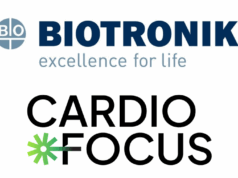 BTL Medical has announced the successful treatment of the first six patients in a first-in-human feasibility study using its next-generation catheter system designed to streamline atrial fibrillation (AF) ablation. This new technology is based on pulsed field ablation (PFA)—an approach through which the company hopes to make AF treatment safer, faster, and more effective.
BTL Medical has announced the successful treatment of the first six patients in a first-in-human feasibility study using its next-generation catheter system designed to streamline atrial fibrillation (AF) ablation. This new technology is based on pulsed field ablation (PFA)—an approach through which the company hopes to make AF treatment safer, faster, and more effective.
The system is currently subject to a clinical trial under the leadership of renowned cardiology experts Vivek Reddy (Mount Sinai Hospital, New York City, USA), Petr Neužil (Na Homolce Hospital, Prague, Czechia) and Štěpán Havránek (General University Hospital, Prague, Czechia).
BTL’s upcoming technology features single-shot, efficient pulmonary vein isolation (PVI) and a versatile design that facilitates intuitive placement in diverse anatomies, as stated in a recent company press release. With the goal of improving procedural reliability and consistency, the system is engineered to target all essential areas—extending beyond PVI—via a single device. The release adds that, enhanced by high-density intracardiac signal acquisition for precise treatment, this next-generation catheter aims to ensure optimal outcomes across different stages of AF, and will offer a comprehensive solution that supports various ablation sizes from precise linear lesions to area ablations, thereby setting “new benchmarks” in AF ablation.
“Our initial clinical results using the BTL catheter are very promising, and I look forward to the continued progress of clinical testing,” Reddy commented.
“I have closely collaborated with BTL in developing this system from its inception, and I am excited to see that the initial results align with the promising outcomes observed in preclinical studies” Neužil added. “The first six patients we treated with the Easy Pulz catheter at Homolka Hospital—together with my colleague Professor Vivek Reddy—had safe, effective and straightforward procedures. These early results suggest that this new pulsed field technology is very promising, with a lot of potential to make treatments easier and better for our patients.”









